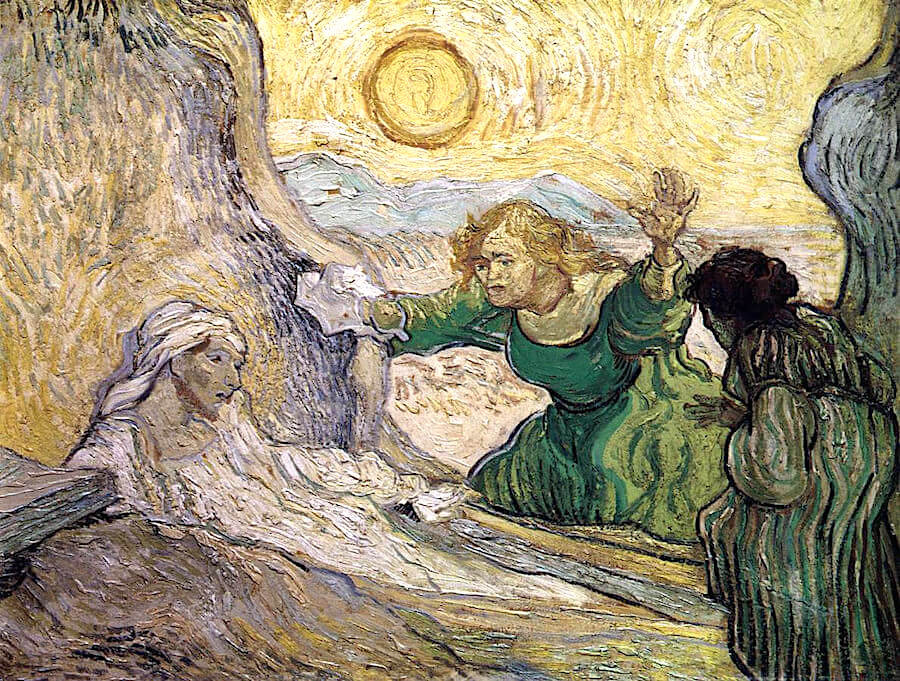The Raising of Lazarus after Rembrandt, 1890 by Vincent van Gogh

Van Gogh is interested in making copies in oil paint of prints by or after the works of those artists who represented for him the pantheon of modern art - Millet, Delacroix, Vermeer, and Rembrandt. He explained these copies in many ways. At one level, in the absence of models, he used them to practise his figure drawing and painting. At another level, he stated that by painting them in colour he was attempting to bring these artists, and what they stood for, before the public once again. This also enabled him to update them by demonstrating what he identified as his contribution to the tradition of modern art - colour. Thus he claimed, with reference to his copy of The Raising of Lazarus by Rembrandt, that he was using colour to convey what Rembrandt had used chiaroscuro - tonal contrasts of black and white - to do. However, in the Rembrandt painting, the pictorial device of light against dark was used to represent a religious theme; light emanates from the figure of Christ to dispel the surrounding darkness and thus depict the miracle of Christ raising a dead man.
Van Gogh did not include the figure of Christ, and this omission precludes a religious reading of the image. Although there is a huge sun in the picture, it is not a pantheistic substitute; it is not a source of light. Van Gogh changed the setting of the scene by painting a wheatfield at sunrise in the background instead of a darkened tomb. In effect, he was locating a motif from Rembrandt in one of his own landscape compositions and replacing an overtly religious subject with a genre painting of figures in a landscape.




















